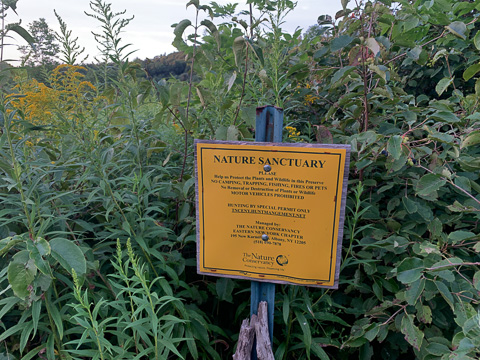
The Future
Donna Vogler: “When I started coming out to the bog in the early 2000s, there were no beavers. They probably moved in around 2008-2010. First came the bachelors, male beavers kicked out of their home territory by the females. These males wander until they can set up camp, and then they work to build an area that might attract some females. There always was a pretty good beaver dam over at the Audubon’s facilities and there’s a lot of wet spots that connect the two, so I would imagine that that’s where these beavers first came from.
"They might leave in the near future. Already they’re having to forage further and further from the bog. The further they have to go to find their food, the more likely they are to be picked off by a predator. There is a point when they’ve cleaned out not only their favorite foods, but their next favorite, and their next favorite, until they’re down to forage what really can’t sustain them well. They'll move on, and in the future they may return once the trees that sustain them fill the area back in."
As we have seen, Emmons Pond Bog is a dynamic environment that is constantly changing on noticeable time scales (like the beavers) and geologic ones (the bog as a carbon sink). We've also seen how human actions have changed the bog, directly by cutting down trees and indirectly by eliminating deer predators leading to greater impacts from overpopulation. Emmons Pond Bog teaches us that ecosystems are both fragile and resilient. Preserving this environment means ensuring that the natural processes of change are allowed to continue.
What can you do to help protect our forested areas?
1. Stay on the trails. Not only does staying on marked trails protect you, it also protects the natural environment. Walking off trail damages vulnerable plants, animals, and soils leading to erosion.
2. Report invasive species to the DEC. If you spot an invasive species when hiking, please report it to the New York State Department of Environmental Conservation.
3. Carry in, carry out. Always remember to properly dispose of any trash or food items you may bring.
4. Leave nature where it is. Removing plants and animals from the environment contributes to the decline of natural habitats and the spread of invasive species. Feel free to take pictures of anything!
5. Do not approach animals. Many types of wildlife can often be found around Emmons Pond Bog. Some animals such as porcupines and beavers, may be dangerous when approached. Touching other animals such as toads and butterflies can cause damage to the organism.